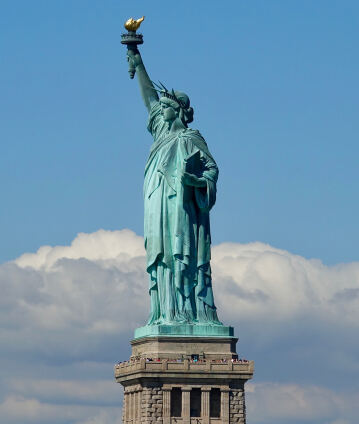“From the New World”: A trip to America with the Berliner Philharmoniker

From rags to riches: for George Gershwin, America became the land of “endless possibilities” as he advanced to become one of the most famous Broadway composers – without ever having attended a conservatory. His name is inseparably linked with US music history, just like those of Ives, Copland, Barber and Bernstein. With music by them and others, the Berliner Philharmoniker invite you on a musical journey to America, where you can expect jazz as well as musicals.
Antonín Dvořák? After the premiere of his Ninth Symphony at Carnegie Hall, the music critics of all the New York newspapers agreed that they had witnessed the beginning of “American art music” – with a work full of “American feelings” (New York Times). Some forty years earlier, the American philosopher and writer Ralph Waldo Emerson had already called for a “declaration of independence in art and the founding of an American school of painting, sculpture and music”. Whether he was thinking of a symphony like Dvořák’s is open to question.
In fact, it was Charles Ives who went down in music history as the founder of American Modernism, among others with the orchestral piece The Unanswered Question, whose enigmatic trumpet solo was inspired by a poem by Emerson. Gershwin’s Rhapsody in Blue brought jazz into the concert hall, although shortly after its brilliant premiere, George Antheil’s Jazz Symphony was the subject of much controversy.
One of the three pianists envisaged in the original version of the Jazz Symphony was Aaron Copland, who later found his typically “American” sound idiom: to this day, the soundtracks of countless US blockbusters refer to his works. His famous Fanfare for the Common Man was followed by Joan Towers’s Fanfare for the Uncommon Woman. Copland’s most famous pupil, Leonard Bernstein, wrote symphonies, musicals and film music in equal measure. His conclusion: “For me every music is serious”.